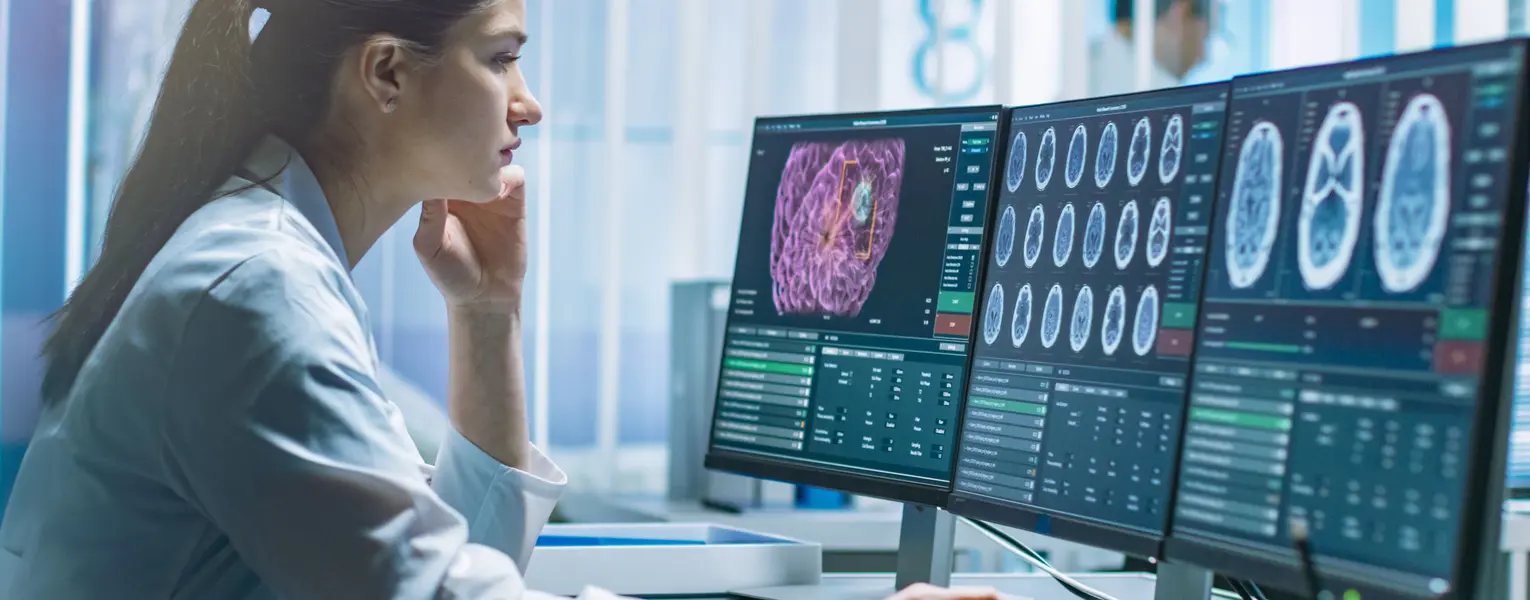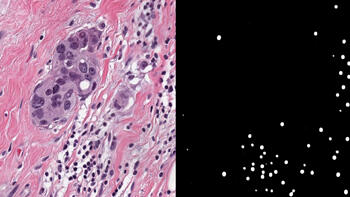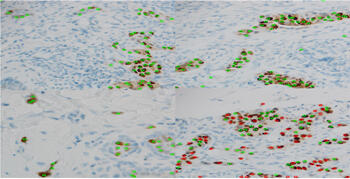
Bioinformatics Data Analysis Services
Bioinformatics combines computer science and biology to diagnose diseases and analyze complex biological data. Engineers and data scientists at Southwest Research Institute collaborate with biomedical researchers to develop complex bioinformatics data analysis. We help industry partners to innovate in the areas of Computational Biomedicine with automated cancer detection, biological data analysis, healthcare outcome prediction, and monitoring the health of humans and other living things.
Diagnostic & Prognostic Research Technologies
SwRI develops machine learning algorithms that enhance prognostics and diagnostics research that identifies disease biomarkers and morphologies. Our data science tools are also used to characterize underlying health conditions, study behavior, and analyze performance. Our engineers leverage expertise in the fields of Sensing & Perception and Machine Learning Technologies relate to the following areas, among others:
Bioinformatics Algorithms

Flow calibration of an orifice flange fitting and plate over the application Reynolds number range.
SwRI is recognized internationally for bioinformatics algorithms, particularly diagnostic tools for breast cancer. We collaborated with UT Health San Antonio pathologists to develop the best performing breast cancer detection algorithm in the BreastPathQ: Cancer Cellularity Challenge. The SwRI-trained algorithm sorted through images of breast cancer cells, matching the findings of human pathologists at the highest rate.
AI Breast Cancer Research
We have since expanded artificial intelligence breast cancer research into new predictive biomarkers that can help lower human error associated with conventional visual diagnostics. Breast cancer is typically diagnosed using hematoxylin and eosin (H&E) stain and assessed visually for morphology, classification, and tumor growth pattern. Tissues are then stained with immunohistochemistry (IHC) to identify predictive biomarkers.

Estrogen receptor stained cells identified by neural network (green correct; red false positive).
SwRI is researching the feasibility of using neural networks and AI breast cancer research to classify breast cancer into different groups based on hormone receptor status. Hormone receptor status is an important prognostic and predictive tool for breast cancer patients, particularly in terms of therapeutic response and development of a novel breast cancer treatment algorithm.
Biological Data Visualization & Analysis
Data science is advancing the ability to visualize and analyze biological data. SwRI leverages expertise in Complex Data Analysis Mass and other specialties to analyze biological data, behavior, and performance. Examples of our biological data analysis include:
- Real-time Neuron Segmentation – We developed an algorithm to automatically identify individual neurons and their parts (e.g., soma, dendrites, axon terminals) from a 3D sample of multiple cells. This effectively created convolutional neural networks of biological neural networks.
- Real-time Cell Classification – Chimeric Antigen Receptor (CAR) T cell therapy has been shown to fight various diseases, including cancers. A novel flow-based cell bioreactor has been developed by SwRI for T cell manufacturing, but monitoring cell size, density, and morphology is a lengthy process that cannot be done in real-time. In collaboration with SwRI chemical engineers and space scientists, we are using hyperspectral Imaging and artificial intelligence to monitor the cells in the bioreactor in real-time.
- Markerless Motion Capture for Non-Human Primates – Our markerless motion capture system is monitoring baboon health in real-time. This research is conducted through collaboration with the Texas Biomedical Research Institute and SwRI's Markerless Motion Capture Laboratory to determine the best health measures for their baboons. It will provide a potential for future collaborations with zookeepers and animal researchers.
